Rocket Lab Initiates the Rocket Lab National Security Subsidiary
Rocket Lab USA, Inc. has created a U.S.-based, wholly owned subsidiary to serve the defense and intelligence community — Rocket Lab National Security LLC (RLNS) — this subsidiary will deliver launch services and space systems capabilities to the U.S. government and allies.
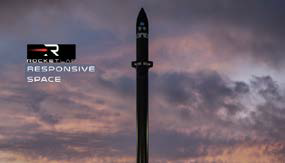
Since the Company’s first launch of the Electron rocket in 2017, Rocket Lab has conducted multiple successful launches for national security customers, including missions for the National Reconnaissance Office (NRO), U.S. Space Force and Defense Advanced Research Projects Agency (DARPA).
Rocket Lab Space Systems technology has also been featured in hundreds of commercial and government satellites serving the national security market, from separation systems and flight software to space solar power and high-performance star trackers.

Under the new RLNS subsidiary, Rocket Lab will build on their proven track record to deliver new and existing space capabilities for national security applications.
“Across our launch and space systems offerings, we have the privilege of working with the full spectrum of space users from primes, commercial constellation operators and small start-ups, to US and Allied government customers,” said Brian Rogers,
Senior Director – Global Government Launch Services. “Through Electron, Neutron and Space Systems, we’ve got first-hand experience of each market’s unique needs. Top of the list for national security is reliability and responsiveness, something we’ve delivered on across multiple missions already. With Rocket Lab National Security we’re building on this strong heritage to deliver tailored capabilities that evolve as the nation’s needs do.”
www.rocketlabusa.com
U.S. CENTCOM activates U.S. Space Forces-Central
U.S. Central Command has activated U.S. Space Forces- Central at the component’s permanent headquarters located at MacDill Air Force Base, Florida.
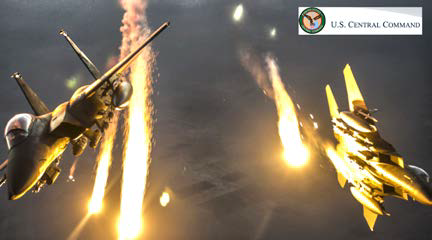
The activation of USSPACEFORCENT is another step for the U.S. Space Force to provide forces to combatant commands, providing combatant commanders with organic spaceplanning and employment expertise.
USSPACEFORCENT is responsible for space operations within the CENTCOM area of responsibility including capabilities such as positioning, navigation and timing, satellite communication, missile warnings, and other missions as required.
Activating this component under CENTCOM provides expert Guardians to work with coalition and regional partners to integrate space activities into shared operations and adds another level of commitment to partners by further strengthening regional stability and security within the CENTCOM area of responsibility.
“Just as the evolution of space as a warfighting domain necessitated the establishment of a separate service, USSPACEFORCENT provides CENTCOM a subordinate command focused solely and continuously on space integration across the command, within all domains and all components,” said U.S. Space Force Col. Christopher Putman, USSPACEFORCENT commander.
“Space underpins every element of warfighting in the CENTCOM region,” said CENTCOM commander, Gen. Michael “Erik” Kurilla. “…Since the Cold War, space has ceased to be a sanctuary. It is no longer solely the realm of progress and peace. Space is now a domain of conquest, conflict, and – for us – cooperation.”
www.centcom.mil
Redwire’s cybersecurity tech to support DARPA mission
Redwire Corporation‘s suite of space cybersecurity tools, developed with BigBear.ai, will be used by Mynaric (in the development of an advanced satellite communication (SATCOM) program that is sponsored by the Defense Advanced Research Projects Agency (DARPA).
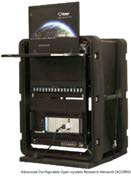
Mynaric will use Redwire and BigBear. ai’s Space Cyber Resiliency through Evaluation and Security Testing (SpaceCREST) platform to support the cybersecurity evaluation of their optical communications terminal.
The SpaceCREST platform ensures the security of its optical communications terminal design for Phase 1 of DARPA’s Space Based Adaptive Communications Node (Space- BACN) program.
The program seeks to develop reconfigurable, multi-protocol communications terminals that are small, lightweight, low-power, inexpensive, and able to connect many different satellite constellations in LEO.
SpaceCREST will be used to identify vulnerabilities that could affect the terminal or disrupt its operation and then find ways to protect against those vulnerabilities.

SpaceCREST will also use Redwire’s digital engineering capabilities to make cybersecurity analysis of space assets more streamlined and reliable.
With Redwire’s Advanced Configurable Open-system Research Network (ACORN) tools and technologies, SpaceCREST enables users to simulate and emulate various hardware and software systems as they are being designed and built.
Using SpaceCREST, Mynaric will be able to ensure that its communications terminals are both secure and resilient.
“Redwire is proud to support Mynaric in identifying and mitigating potential vulnerabilities within crucial national security programs,” said Dean Bellamy, Redwire’s Executive Vice President of National Security Space. “This application of SpaceCREST demonstrates the value that Redwire and BigBear.ai’s collaboration holds for the growing space economy. SpaceCREST will be a critical tool for proactive maintenance and protection of government and commercial customers building the next generation of resilient space architectures.”
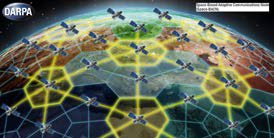
“As the world has increased its reliance on space assets in both government and commercial operations – ranging from mission-critical national security operations to GPS navigation – the ability to accurately detect and address system vulnerabilities is essential to the everyday lives of billions of people,” said Eric Conway, BigBear.ai’s Senior Vice President of Technology, Federal Solutions. “BigBear.ai is excited to partner with Redwire to deliver SpaceCREST to Mynaric in support of DARPA’s efforts to ensure the next generation of satellite communications are resilient to cyberattacks.”
Redwire Corporation (NYSE: RDW) is a leader in space infrastructure for the next generation space economy, with valuable IP for solar power generation and in-space 3D printing and manufacturing.
BigBear.ai delivers AI-powered analytics and cyber engineering solutions to support mission-critical operations and decision-making in complex, real-world environments. BigBear.ai’s customers, which include the U.S. Intelligence Community, Department of Defense, the U.S. Federal Government, as well as customers in manufacturing, healthcare, commercial space, and other sectors, rely on BigBear.ai’s solutions to see and shape their world through reliable, predictive insights and goal-oriented advice.
TriSept + SpiderOak join forces to tackle growing cyber threats in LEO
TriSept and SpiderOak are now engaged in a strategic partnership that is aimed at providing a comprehensive, end-to-end, security system capable of ensuring critical commercial and government, space and ground operations are protected from intentional interference and/or attacks.

Space-based services are critical to everyday life, for the military and civilians, supporting critical services and infrastructure including utilities, aviation, emergency communications, and military operations.
The most significant threat to these space-based assets is a cyber-attack — with the exponential growth of government and commercial satellites in LEO, the vulnerability grows in lockstep.
To address this growing threat, the Linux-™based, TriSept Secure Enhanced Layer (TSEL) operating system together with SpiderOak’s OrbitSecure, zero-trust protocol offers one of the first complete commercially available satellite security solutions capable of protecting both new space and legacy satellites operating on-orbit.
TSEL locks down the spacecraft hardware and OrbitSecure locks down the data exchanged between the spacecraft and ground segment. This complete end-to-end solution for secure data processing, storage, and transmission is the first of its kind.
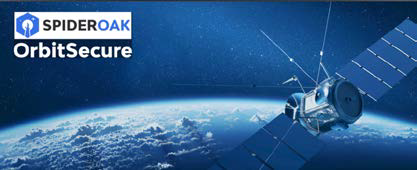
TSEL was developed to meet rising demand across the satellite industry for a managed, cybersecurity solution. TSEL implements security best practices from 14 security industry standards and has more than 1,000 security controls applied.
By offering a series of automated mechanisms and updates delivering far more detailed audit data, near-real-time security analysis and patch updates along with “Trust No One” (TNO) verification layers, TSEL protects against hackers and provides an accurate account of what’s happening aboard conventional and smallsats at all times.
TSEL provides protection for satellite embedded controllers of onboard systems and subsystems by detecting, tracking and eliminating known and emerging vulnerabilities.
SpiderOaks’ OrbitSecure provides equally robust and reliable protections across both the ground and space infrastructure supporting satellite and mission data communications between Earth and entire constellations across LEO, MEO, GEO, and cislunar.
A pure software offering, OrbitSecure leverages a unique combination of no- knowledge encryption and distributed-ledger technology to bring zero-trust security to zero-gravity environments with high assurance and pure peer-to- peer coordination and communication.
“As the new space economy leads to increasing dependence on spacecraft operations, commercial and government operators need a reliable and robust security solution that effectively protects against growing threats across the ground and space infrastructure supporting a broad range of missions,” said Rob Spicer, TriSept CEO. “The partnership between TriSept and SpiderOak leverages our complementary TSEL and OrbitSecure technologies and a shared commitment to safe space operations to deliver a breakthrough in cybersecurity for virtually every mission.”
trisept.com
spideroak.com
Thales awarded French MoD contract to build deployable comms networks for Theaters of operations
The French defence procurement agency (DGA) has contracted to Thales the design of deployable and high-speed communications networks for theaters of operations, a major asset for collaborative combat.

Thales will deliver more than 200 modular, mobile stations in the phase 3 of the ASTRIDE 3 contract., thereby enabling France to command coalition forces as a framework nation, as well as provide the French armed forces with an autonomous multi-brigade force projection capability. Thales will work with several partners to deliver a high- speed, mobile and secure command infrastructure for deployment in an extremely wide range of tactical situations.
ASTRIDE 3 integrates new connectivity systems, such as latest-generation satellite terminals (SYRACUSE IV ), HCLOS (high-capacity line-of-sight) communications, tactical software- defined radios (CONTACT ) and digital wireless services (LTE technology). These assets will interconnect the battlespace and provide a resilient network of connected command posts from theatre level down to tactical units. ASTRIDE 3 could also offer defence cloud hosting capabilities to meet the needs of collaborative command structures and support a broader computer network defence (CND) initiative to deal with cyber threats. ASTRIDE 3 stations will meet the latest FMN (Federated Mission
Network) interoperability standards and enable France to act as a framework nation for forces command at Land Component Command (LCC) or Division level.
The integrated, automated ASTRIDE 3 stations will accelerate and simplify maneuvers in the theatre of operations, enabling forces to deploy different versions of the station — hardened container, shelter (transport cases) or pre-integrated in armored vehicles in the SCORPION ecosystem — to adapt to an extremely wide range of tactical situations. Wireless connections will shorten command post deployment times by significantly reducing the number of manual operations required. In addition, the network planning, command and supervision tools MOSART, will give land forces unprecedented agility in adapting to the tempo of their mission.
Thales’ sites in Cholet (Pays de la Loire) and Gennevilliers (Ile-De- France), as well as those of numerous French technology partners and SMEs, contribute to both the development and production of the physical and software components of the ASTRIDE 3 system.
www.thalesgroup.com
USSF’ s Space Delta 2 leverages SDA in support of Artemis I mission

On November 16, 2022, NASA’s Artemis I successfully launched from Space Launch Complex 39B. This landmark event marked the first successful launch of the Orion spacecraft and Space Launch System (SLS) rocket. Artemis I reentered Earth’s atmosphere on December 11, 2022.
Over the course of Artemis I’s flight, Space Delta 2 and its components, the 15th Space Surveillance Squadron, 18th Space Defense Squadron, 19th Space Defense Squadron and 20th Space Surveillance Squadron, collaborated to test capabilities to maintain custody of cislunar objects.
Additionally, they defined xGEO tracking, which refers to any area beyond the geosynchronous orbit where the standard laws of orbital dynamics no longer apply.
Space Delta 2 also functioned as a liaison by sharing information, data points, and lessons learned among the Department of Defense, commercial, academic and other government partners.
Space Delta 2’s mission is to prepare and present assigned and attached forces enabled to execute combat-ready, SDA operations.
In other words, they aim to maintain and ensure freedom of action for the United States, its allies and commercial partners in the space domain.
XGEO tracking and the cislunar regime are rapidly receiving more focus from all space-faring nations and must be included in the totality of Space Delta 2’s mission.
Space Delta 2’s ability to support missions such as Artemis through their operational skillset and integrate with national and global partners help secure our place as a leader for the peaceful use of the global commons.
“Providing support to the Artemis I mission allows Delta 2 sensors to test cislunar tracking tactics, techniques, and procedures for future crewed missions,” said Colonel Marc A. Brock, Space Delta 2 commander. “SDA requires Space Delta 2 operators to obtain and maintain a continuous, comprehensive, and combat-relevant understanding of the space situation. This data is critical to satellite operators all over the world in achieving mission success as the space domain becomes more contested and congested.”
Brock continued, “SDA is the foundation for all operations occurring in, from and to space. It serves as the cornerstone for Joint Force success. Timely and accurate xGEO space object detection and tracking in conjunction with our traditional SDA operations closer to Earth will be essential to our support for human space flight safety from launch to lunar landing and return, to facilitate human exploration and to promote the peaceful and responsible use of space.”
Article is courtesy of 1st Lieutenant Hillary Gibson, United States Space Force
SES Space & Defense launches a new Single-Pane-of-Glass ICT Portal capability
The Information & Communications Technology (ICT) Portal provides transparent and consolidated network visibility improving performance and operational decision-making.
SES Space & Defense, a wholly-owned subsidiary of SES, announced their new Common Operational Picture (COP) capability, the Information & Communications Technology (ICT) Portal.
The ICT Portal is a modular, web-based, NetOps capability that provides end-to-end situational awareness in a consumable, single-pane-of-glass, user interface.



